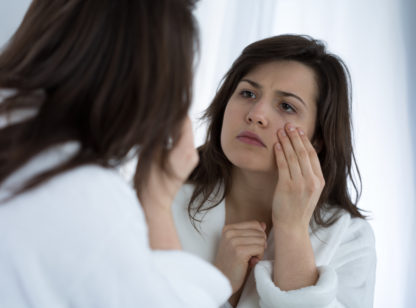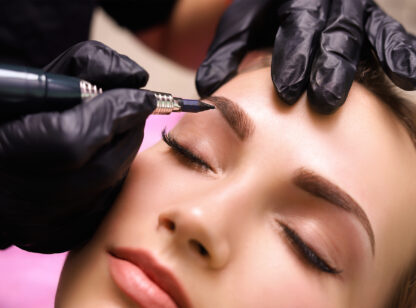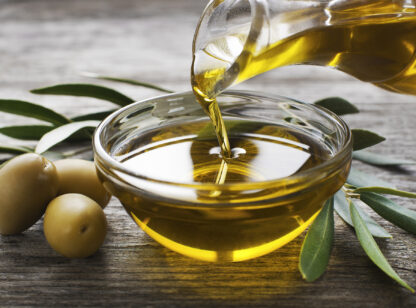Twenty years ago, non-invasive options for cosmetic improvement were few and were crude compared with what is available today. Collagen and silicone injections were the only options for fillers, and chemical peels were the solitary choice for skin resurfacing. The collagen of yesterday was effective for a very short time compared with today’s options, and chemical peels were hit-or-miss – and the misses could be disastrous.
The major trends today offer patients more options, longer lasting results, increased predictability and safety. That’s why the non-invasive segment is now available in so many surgeons’ offices, and in many other places, such as dermatologists and medical spas.

Trends today offer patients more options, longer-lasting results, increased predictability and safety.
As a surgeon, I inform all my patients about all options available. Sometimes non-invasive techniques offer a means of getting a similar, or the same, result as surgery, and sometimes it is actually better than surgery. Even though some patients don’t want to hear it, I have to honestly identify people for whom non-invasive procedures are a waste of time and money, and surgery is the best option.
Everyone wants fast recovery and inexpensive improvement. I know I do. Non-invasive techniques provide just that most of the time. The buyer has to beware, so do your homework and get all the information from your provider and other independent sources. Do not believe everything you read on the internet, or what your friends tell you. Different people have different skin, and that skin has been treated differently during the course of its life. People who are twenty-something and have always protected their skin will get a different recommendation than a fifty-something person who worshipped the sun when they were young. Sun damage is cumulative, but luckily there are procedures to turn back the hands of time.
Neurotoxins
The most well known in this category is Botox. Dysport and Xeomen are other neurotoxins. Dysport differs subtly from Botox, and your provider can determine if it’s the one for you. The neurotoxin explosion began in the 1990s, and new applications for these drugs are discovered every year. There is no recovery and the benefit can be observed in a few days. There are exceptions, but they are mostly used on the upper face: crow’s feet, forehead and between the eyes where the #11 forms between the brows.
Fillers
Hyaluronic acid fillers like the Juvederm and Restylane family of fillers dominate the market – and for good reason. After a one-day recovery, substantial improvement can be observed and the results last from 6 to 24 months. Some fillers are injected deep to replace lost volume (volume loss looks old) and some go more superficially for folds and finer lines. Most patients would benefit from using a combination of two fillers: one deep and one layered over that.

Fat melting is the newest of all the non-invasive techniques.
Skin Tightening
Non-invasive skin tightening includes therapies such as Thermage and Ultherapy, among others. The idea is to heat up the deep dermis, which sends it into a proliferation phase and thickens/tightens the skin. There is little or no recovery. Surgery tightens the skin in a particular direction; whereas these techniques are more like shrinking a garment, and surgery is more like tailoring the garment. As I said, it’s not one size fits all and often I recommend a lift for mini-lift instead.
Resurfacing
This means taking off the surface of the skin to reveal newer, smoother skin beneath. The only problem is that new skin is immature and needs time to toughen up to withstand the rigors of daily exposure, so there is a bit of recovery. Many lasers now treat fractionally. That means the laser hits a fraction of the skin, not 100% of it. The benefit is that since not all the skin is traumatized, recovery is quick. Chemical peel is still used, as is microdermabrasion and derma-planing. There is something for every person’s type of skin and recovery stipulations.
Fat Melting
This is the newest of all the non-invasives. One technique, Coolsculpting, freezes fat and the frozen (dead) fat is re-absorbed and excreted (which means you pee it out). The newest in this category is Sculpt Sure, which uses a laser to melt fat and the treatment time is much quicker. I think you will be hearing a lot about this therapy in the near future. Nothing is more precise or thorough than liposuction, but for many patients with busy lives, non-invasive fat melting is precise enough and good enough. It doesn’t “replace” liposuction though.
In my opinion the best person to advise you as to whether non-invasive techniques apply to you is a board-certified plastic surgeon. Only we can thoroughly evaluate if the non-surgical technique is nearly as good as the surgery, because we know surgery. I have mentioned tried and true treatments that are FDA-approved but, remember, these therapies are only as good as the person providing the service.
Dr. Chopra is medical director of The Plastic Surgery Institute in Rancho Mirage and can be reached at (760) 568.2211. Please send your ideas and recommended topics for his column via email to csmith@roxsurgery.com.

















































Comments (0)